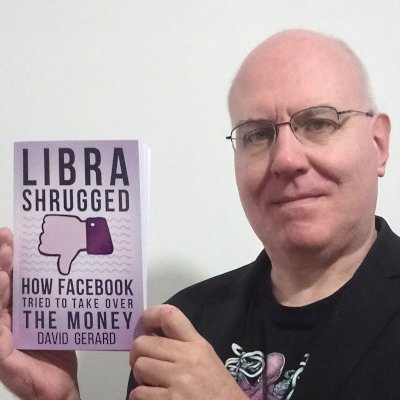26
David Gerard (@davidgerard@circumstances.run)
circumstances.runUrbit announced its summer acceleration program. Being made of smarmy edgelords, they called it "u/acc".
I mentioned this and someone asked wtf is an Urbit. So!!
Urbit is the OS founded by Curtis Yarvin, aka the creator of neoreaction Mencius Moldbug.
Urbit is a new paradigm for computation that combines functional programming with what happens when libertarian anarcho-capitalism goes so right-wing reactionary that it openly turns into Hans-Hermann Hoppe’s vision of neo-feudalism. And that sentence needs a Wikipedia article per jargon word.
Think "what if networked Lisp machines, but for Nazis."
Urbit isn’t useful for anything. The apps don’t work, and the ones that do work bypass the language that the functional programming vision of the system is supposedly based on.
I would call Urbit "TempleOS on the blockchain", but that makes it sound too interesting.
Urbit outdoes bitcoin for the degree to which it combines "interesting" in the sense of "what the hell even is this" and "I'm not even mad, that's amazing" with utter unfeasibility and utter uselessness.
This is what gives Urbit what little life it has: it's technically technically-interesting, but utterly unusable. Other functional programmers think it's trash. The only FPs who take it seriously are also techfash.
So Urbit has no technical merits to succeed on, and only its political cult. So it leans *hard* into that cult. Urbit's only function is as an identifier to fellow fash. Which it's serving admirably.
Only one kind of person has an Urbit. If you see a string of the format "~abcdef-ghijkl" in someone's bio, they're that kind of person.
If you really want to understand "yes, but *why* Urbit?" "why the *fuck* Urbit?" then the answer is still Elizabeth Sandifer's book Neoreaction a Basilisk. I believe the approved method is to libgen it and *also* buy the paperback.
As we all know, the use case for social media is to get laid. So I wonder if there's pent-up neoreactionary passion just waiting to be unleashed on Urbit. I expect the incel forums there are a delight.


this is awesome! it fits well with a lot of the (mental) notes I made tracing Urbit history as part of a deconstruction of the earlier inroads technofascism made into the wider tech world. some loose notes to expand on a couple topics:
last time I brought this up on r/SneerClub, some weird fascist found the post and made the mistake of linking Yarvin’s original blog posts, which are kind of hilarious. I’ll dig them up and link them here when I can
PG gets off way too lightly as a mere annoying vc most of the time. There is plenty of sneer project potential in each of his pointed, dumbly confident “essays”
deleted by creator
This is a masterpiece. Thanks for sharing, I’d not seen it before.
back before Maciej’s brain was also eaten by worms
I hope you’re gonna put all this knowledge in a book one day
oh fuck yes there is. I posted his latest LinkedIn-style blog essay about “how to love your work” (from a guy who doesn’t need more money) on TechTakes a few weeks back. at some point I need to start pushing on paully g’s “father of modern Lisp” nonsense, cause there’s a lot there that doesn’t add up either
Did he ever release the “dialect” of lisp he was working on?
he did! it died almost instantly because it’s a mediocre language built by someone with no idea why Lisp is good and it requires you to install a much better Lisp to use it because it’s not even self-hosting. I was hoping arc’s failure would be when the shine came off of his image as a Lisp hacker, but the tech industry isn’t that smart
here’s one I’ve been wanting to ask for a while: did anything of value come out of paully owning a Lisp machine?
Haha, fucking wot?
aka don’t ask for docs because you’re supposed to learn the language by making the REPL crash. paully really doesn’t know anything about good Lisp
also I just remembered his second attempt at reinventing Lisp, which was much lazier. no website for that one, just a couple of text files, cause he did the bare minimum of what arc couldn’t (a metacircular compiler, theoretically, but nobody can run it) and then just decided that was good and dropped the project
paul! I’ve seen someone compile Lisp into pure lambda calculus! it was fucking insane! nobody is impressed with this basic shit!
I mentioned his The Acceleration of Addictiveness essay in a recent blog post because Nir Eyal seems to have justified his whole “habit-forming” brand on it.
the links I mentioned:
e: holy shit I revisited that last link
this is the most mask off description of the fake decentralization crypto projects build on (and Urbit might have invented, unless we can dig up prior art) I’ve ever seen
I decided to head the acasualrobotgod off at the pass and torture myself by reading through the early Urbit spec in full (whose content is completely different from the one @gerikson@awful.systems posted), and I found something interesting; the info I gave above about Urbit taking ideas from Nix isn’t quite accurate. the reality is much worse.
so yarvin’s specs are meandering as fuck of course, but eventually they get to some kind of point. in short, Urbit’s main computational function consists of two other functions.
urbit-inferknows how to pull code from the network, cryptographically verify its integrity, and transform (build) it. this is Nix’sfetchurland half of Nix’sderivationfunction.urbit-rendertakes the output ofurbit-inferand stores it in a unique path in Urbit’s pathspace. this is the other half ofderivation.urbit-infer, and that the existence of a path guarantees that its contents are the output ofurbit-renderfor that path’s instance ofurbit-infer. this is just Nix’s core data structure, the Nix store, copied wholesale into Urbit but with a much stupider uniqueness algorithmnow note that Nix is actually a lot older than I indicated before. it was first released in 2003, and Eelco Dolstra’s first paper on it was published in 2004, 6 years before Yarvin’s first posts about Urbit. that 2004 paper featured details on
derivation,fetchurl, and the Nix store, all of which exist almost unchanged in modern Nixa lot of the differences between Urbit and Nix (like pathspace forks) seem to be attempts to work around implementing the trickier parts of the Nix evaluation model
given the big similarities in functionality and structure between the Urbit computational function and Nix’s core functions and data structure, the wide span of time during which Yarvin could have read the Nix paper (and Dolstra published about Nix several more times between 2004 and 2010), and Nix’s obscurity until around 2015, I’m willing to upgrade my suspicion to an accusation:
Urbit’s core functionality is a shitty, plagiarized version of Nix, but intentionally crippled to keep Yarvin in control
this has got to be my last Urbit deep dive for a while, but I figured it couldn’t hurt to write up some notes here in case Urbit starts marketing hard again
For
funself-flagellation, I checked out Yarvin’s original Nock/Hoon docs, available here:https://github.com/cgyarvin/urbit/tree/master/doc/book
It contains the following classic sentence, which is basically Urbit in a nutshell:
@self at one point we tried to figure out how to make Urbit, like, do anything, and every time we got close, yarvin would move something around. we eventually caught on and walked away, hopefully less than a footnote in their history